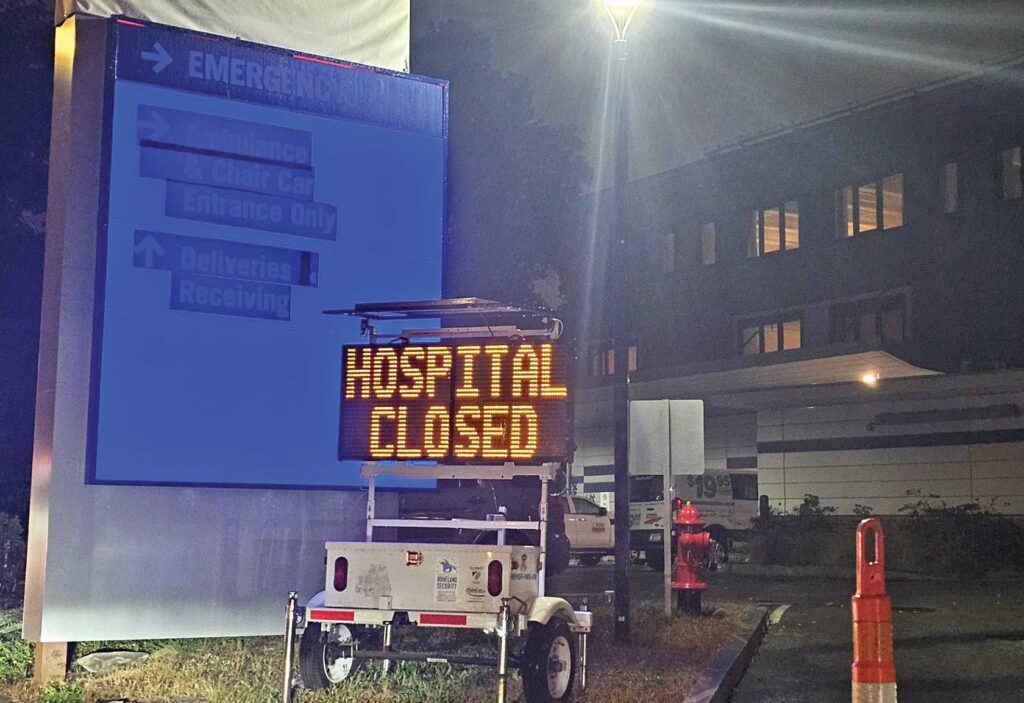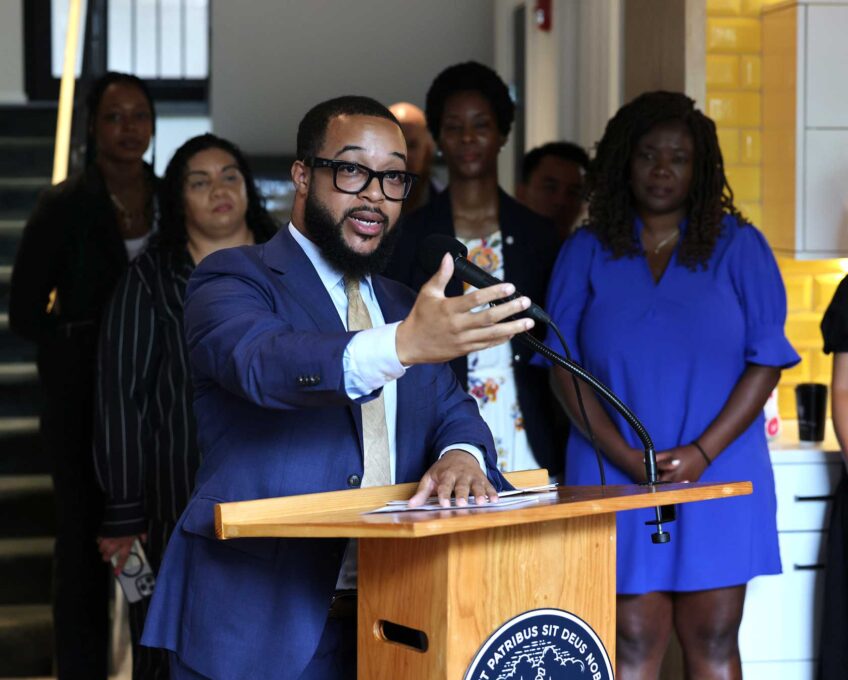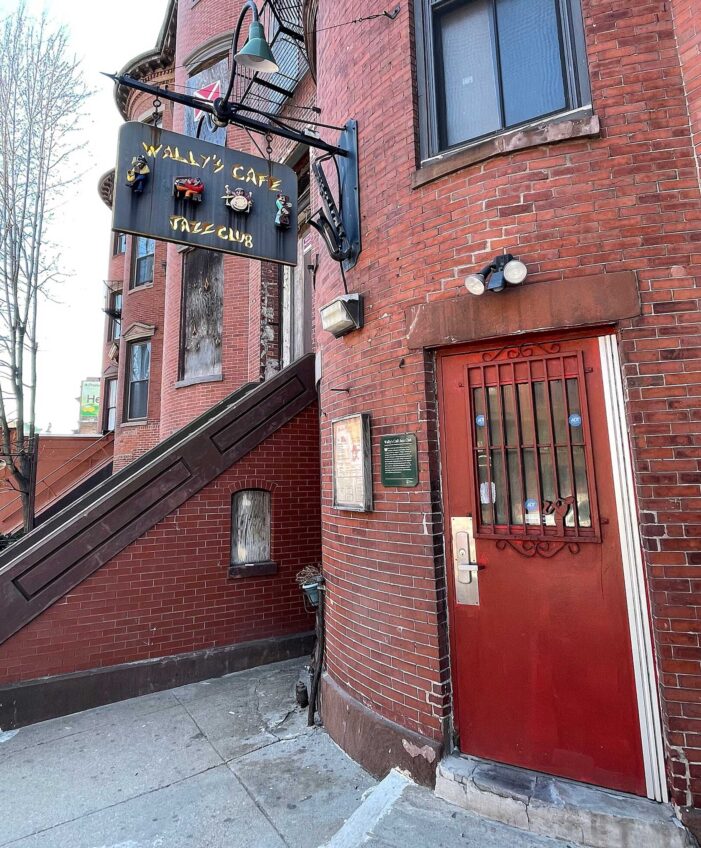
Banner Business Sponsored by The Boston Foundation
As Massachusetts’ health care landscape grapples with the departure of Steward Health Care, advocates call for renewed push to prioritize care.
Ten months into the year, the state’s health care landscape has seen steadier footing.
This year saw the implosion of Steward Health Care in Massachusetts that led to the sale of five hospitals and the closure of two others, including Carney Hospital in Dorchester. Those transitions have left communities grasping for care.
Last month, Point32Health, the state’s second largest health insurer, announced that it was unable to come to a deal with Boston Children’s Hospital and UMass Memorial Health in Worcester meaning at least 22,000 patients are set to lose access to primary care doctors and specialists at the start of next year. An impasse with Tenet Healthcare, the owner of three hospitals in central Massachusetts, could grow that number to nearly 40,000.
For some local health care leaders in Boston, instances such as these are symptoms of a larger issue: that health care in Massachusetts — and the country at large — is less of a system designed to promote care and is more focused on maximizing profits.
“People refer to us as having a health care system; we don’t have a system,” said Dr. Guy Fish, CEO at Codman Square Health Center in Dorchester. “A system connotes some degree of design, planning organization, and in the best cases, some optimization. We have an industry, and in an industry, all parties are interested in self-maximization.”
It’s a landscape that Fish, and others, say has shaped how those working in health care in the state prioritize what sort of care is readily offered, with a focus on specialty care and procedures that do a great job treating conditions when they arise, but may leave communities wanting when it comes to preventative care.
The system is has developed isn’t cheap either. Bill Walczak, a long-time health advocate in Dorchester who briefly served as president of Carney Hospital and founded Codman Square Health Center, said that he views the focus on the market as the driving factor for health care in the state as “the first mistake that has been made in Massachusetts,” which has resulted in a costly care landscape.
A report, published Oct. 10 by the Massachusetts Health Policy Commission, found that between insurance costs and out-of-pocket expenses, the average annual cost of health care for a family in the state exceeds $29,000. The same report found that, last year, 900,000 privately-insured residents in the state did not get needed care because of cost — up from 600,000 two years before.
It provided recommendations to increase the state’s market oversight tools and increase equity and access.
The focus on profit has also limited what options may exist for novel ways to make care more accessible or equitable, said Amy Rosenthal, executive director of Health Care for All Massachusetts, a nonprofit focused on increasing access to health care in the state.
“I think sometimes some of the best ways we think [to improve care that] are realistic to do kind of come into conflict with how payment structures are set up and how payments are incentivized in the health care system,” Rosenthal said. “That’s really tricky.”
In some ways, it has also prioritized medical care over health generally, said Fish who draws a distinction between the medical industry — care and services provided in hospitals and by medical professionals — and the health industry, which includes a broader focus on things like access to good food and housing.
Decreased focus on these out-of-hospital health factors — called social determinants of health — have contributed to a system that responds to health needs, rather than preempts them, Fish said.
“I would say that, in this society, there has been a full financing and vetting of the medical industry, reimbursing doctors and institutions for doing things to people such as surgeries and procedures, and an under-investment in the health-related aspects, which are addressing societal drivers through community health centers, community-based organization and public health,” he said.
One path forward: increased access to primary care
One direction advocates said the system could improve was with a stronger focus on primary care, supporting access to medical providers who can help prevent more pressing health issues from developing, rather than treating them once they develop.
“If you end up with a dreaded disease or illness that only few people have or is very complicated, you want that degree of expert knowledge, so, we’re all very grateful for that,” Fish said. “However, most of us, most of the time, actually don’t need that degree of specialization.”
According to data from the Kaiser Family Foundation, as of September, specialty care physicians made up about 55% of the state’s nearly 37,000 doctors.
For Health Care for All, greater support for primary care access is shaping up to be a priority, as the group works on developing its advocacy priorities for the 2025-26 legislative session.
In that work, community health centers present one path forward to increase access to primary care.
“Health centers were a response to a system that no longer was providing primary care services based on, based on, mainly on income,” Walczak said.
He said that as the community health centers started to develop in the 1960s, they were responding to the needs of communities who, without access to primary care providers, would show up at emergency departments to get vaccinations or basic prenatal care.
While funding for the centers hasn’t always been the most plentiful, Fish said, the model of focusing on primary care has beaten the odds again and again.
“In many ways, if you had to spend a marginal $200 million in Massachusetts on building a new hospital wing or shoring up some aspect of the biotech industry or putting it into community health centers, I think the proof is already evident that that investment in the 52 community health centers in Massachusetts would deliver huge returns,” he said, pointing to the organizations’ ability to partner with community-based organizations that can focus on primary care but also on social determinants of health in a way that can prevent the need for more expensive care down the road.
The thought-process around community health centers is a mindset that’s been baked into their DNA since their early days, said Walczak, pointing the formation of Codman Square Health Center in the 1970s.
“Our goal really, when I think about it today, was revolutionary,” Walczak said. “It was the idea that, somehow, the marketplace wasn’t going to dictate how health care could get delivered, that we we’re going to look for ways in which communities could actually participate in developing their own systems of care.”
And that idea of health in the community extended beyond just providing primary care and medical services to looking at the social determinants of health. Currently, Codman Square Health Center works to provide access to health food through a teaching kitchen and a partnership with Daily Table, an affordable grocery store that only offers healthy options, and works to support fitness through a fitness center run by Healthworks.
“We’ve been tested and our model of focusing on primary care, doing integrated care with behavioral health, with nutrition and stabilizing the health of individuals and communities in this regard is very tried and true,” Fish said.
That sort of expansion is something Walczak pointed to as something that bigger players in the local ecosystem are starting to pursue — for example, health equity efforts from Boston Medical Center have included a $6.5 million investment to address homelessness in 2017, and Mass General Hospital runs a food pantry in Revere — but he wants to see more of that work across the landscape.
“If you were thinking about the building blocks for good health, the first things you would talk about would be food and nutrition and exercise,” Walczak said. “We don’t talk about that in our health care system; it’s an afterthought.”
But community health centers likely can’t be the only solution to the problem unless they receive greater support and can expand the number of patients they can serve.
They can face long wait times and limited capacity — with increased draws on their services in the wake of events like the hospital closures.
In the immediate aftermath of the closure of Carney Hospital, Codman Square Health Center saw a jump in the number of patients seeking care in its urgent care facility. Wait times, right after the closure, rose to five hours — though changes in the set-up brought those back down to about two.
“We can’t just say, ‘let’s send everyone to the community health centers,’ because they just don’t have the bandwidth,” Rosenthal said.
Impact of Steward Health Care raises flags
The closure of Carney Hospital in Dorchester and Nashoba Valley in Ayer came after a condensed, month-long process where hospital staff and community advocates in both areas were vocal about the impacts the loss of the two hospitals would mean. Even as Steward sold five other hospitals across the state in deals struck in a Dallas-based federal bankruptcy court, without qualified buyers, the two hospitals were left to shut down at the end of August.
The role of the financial landscape in the closures was no secret. Ahead of the two facilities being shuttered, Kate Walsh, the state’s Health and Human Services secretary, said that the closures would go ahead as “the market has spoken.”
Now the surrounding communities are left grappling with the lack of access to the services those facilities provided — for example the bustling emergency department and 70 psychiatric care beds.
And for the hospitals that remained open, now under new ownership, patients and community members have faced confusion about where services stand.
For the two shuttered facilities, state-organized working groups are looking to figure out how to close the gaps left behind. But even as those groups were first announced in late September, leaders said they saw the effort as a chance to find new solutions to better ways to provide care in the Dorchester area and in Ayer.
In that work, members of the group want to address the fears community members are facing, but also figure out how to bring new support to the area.
“In situations like this, we need to address the needs of the people on the ground, and at the same time, we have to figure out what the opportunities are to create better care in a better way the people who need it most,” said Rosenthal, whose group Health Care for All is part of both working groups.
Fish, who serves on the Dorchester-based group, said he was hesitant to make broad statements about the work until the groups are further into their task, but said he is encouraged by what he’s seen so far: a data-driven effort looking for action rather than a space to just air opinions.
One piece of that process that gives hope to people like Fish is that the process has begun with door-to-door canvasing and other community engagement to see what people living in the area impacted by the closure of Carney Hospital, as well as Nashoba Valley Medical Center in Ayer, say that they need.
“Starting with what the community needs is the most hopeful thing that you could do to get to a different result, rather than trying to reinstitute an 1880s model of medical delivery,” he said.
That step has largely been led by Health Care for All. Rosenthal said that, in the Dorchester area, the group has so far had about 2,500 conversations with people that have identified many fears related to the closure, including the void left by Carney’s emergency department, travel times to other facilities and the loss of jobs the hospital provided in the area.
And the impacts of the departure of Steward Health Care from within Massachusetts has sparked wider conversation around how care is structured and delivered in the state.
While Rosenthal said she’s heard some debate about what benefits some private equity could have in the health care space, she said work needs to be done to make sure there isn’t another situation where the drive for profit so vastly outweighs the push for good care.
“I think when you look about how things spun so out of control with Steward, I think we need to take a really, really, close look at private equity and understanding how we make sure that we don’t let another Stewart-Health-Care-type crisis happen again,” Rosenthal said.
That broader discussion, and efforts to consider how to balance industry needs with providing the best, most equitably accessible care, is complicated by an intricate, interconnected system, Rosenthal said, which will require bringing all stakeholders around the table and having everyone willing to give.
But advocates said those conversations are worth having.
“Let’s pull people together and say, ‘okay, the goal is not money, the goal is health,’” Walczak said. “Let’s what can we do differently that would result in a healthier population?






